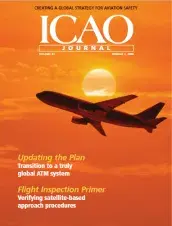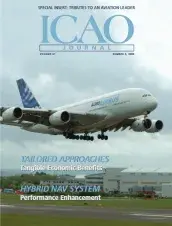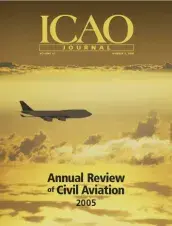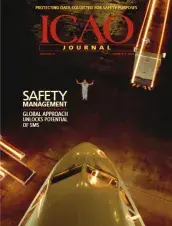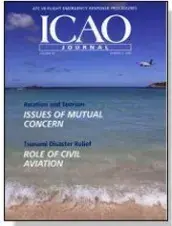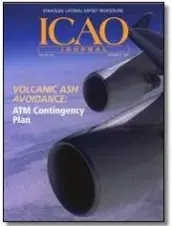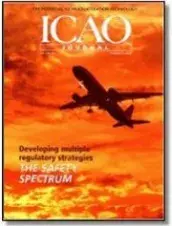ICAO Journal
The objective of the Journal is to provide a concise account of the activities of the International Civil Aviation Organization and to feature additional information of interest to Contracting States and the international aeronautical world.
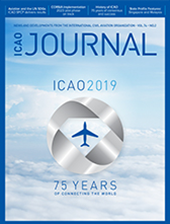 (ICAO Journal is available in English only from 2013)
(ICAO Journal is available in English only from 2013)
36th Assembly Review: A new plan for Africa and multiple resolutions designed to improve the safety, security, efficiency and sustainability of global aviation feature prominently in the results of the 36th ICAO Assembly. Also in this Issue: SMS—New Perspectives on Safety; ISD Profile; Climate Impact of Aviation; Smithsonian Birdstrike Overview; Printing Section Feature; ACI Feature on Noise and Local Air Quality; ACI Director General Message.
The ICAO concept of required navigation performance (RNP) is being revised in light of industry demands for performance-based navigation (PBN), a concept that encompasses both area navigation (RNAV) and RNP (see page 5). Also appearing in this issue (page 9) is a look at implementation of RNAV and RNP procedures in the United States, where the move to PBN has already demonstrated capacity improvements and other important enhancements.
Cover photo: An Airbus A380 overflies the Airbus factory in Filton, England during a visit to the United Kingdom that included airport compatibility tests at London Heathrow Airport. Special Insert: ICAO bids farewell to its long serving Council President, a tireless worker on behalf of international civil aviation.
As highlighted by our annual review of civil aviation, the world's scheduled airlines last year transported more than two billion people for the first time, while also posting a combined operating profit of one percent of operating revenues despite a substantial increase in the cost of jet fuel. The special report begins on page 6.
Several of the feature articles in this issue are dedicated to the topic of safety management systems, a tool that provides performance-based approaches to the management of safety. Under ICAO provisions that took effect in November 2006, airport operators, aerodrome operators, ATS providers and maintenance organizations are required to implement such systems.
The natural interdependence of aviation and tourism is not adequately reflected in current institutional arrangements and calls for closer cooperation between the two sectors, according to the article beginning on page 5. Also in this issue, the massive relief operation that followed the 26 December tsunami disaster relied heavily on air operations (see page 9).
As highlighted in the article beginning on page 4, experts are developing a robust ATM contingency plan for avoiding volcanic ash in European airspace, a high priority given the strong likelihood of a major volcanic eruption occurring in Iceland. Also in this issue, pilots are being encouraged to follow a new procedure introduced in North Atlantic airspace last year (see page 8).
A new concept known as the safety spectrum encourages regulators to embrace strategies that reflect the way people and organizations act in reconciling safety, business and management issues. As explained in this issue (see page 4), by tailoring regulatory approaches to different organizational cultures, regulators can ensure compliance with minimum safety standards while also providing the right inducements to advance safety management thinking.
A time lapsed exposure of a night-time departure illustrates this edition of the Journal, a summary of the major developments in international civil aviation last year as well as airline traffic and financial forecasts for the 2005-07 period. The big surprise of 2004 was the extent to which air traffic rebounded from the recent years of stagnation. Included in this year's report is a commentary on the challenge of reporting and interpreting air transport statistics, which may be more of a science than most people appreciate (page 20).


